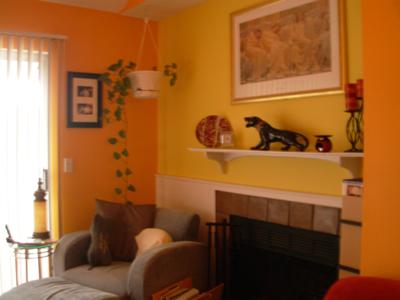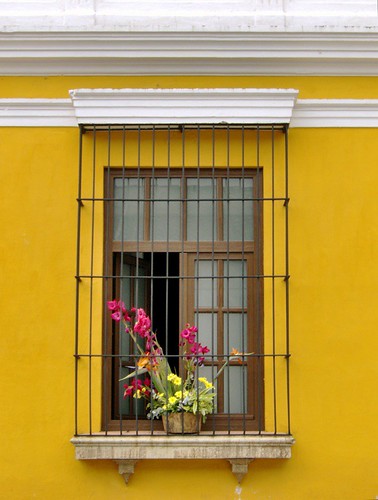On to one of the busiest days of my life!
I decided to keep the basic color scheme of warm adobe shades we had discussed--let it be a sunrise landscape. This would keep the colors harmonic and relatively simple, and still get the lovely effect of green plants against oranges and yellows.
I stopped on my way to NYC at a Wal Mart and picked out two basic shades of wall paint, to lay in the background.
Then, since these walls were much smaller than the synagogue walls, I decided to go for the indulgence of high-quality
acrylic paint. The colors were much richer and deeper, and when watered down, dried almost instantly, leaving no fumes. Considering the time frame, it seemed a worth while investment.
I got
flow medium, as well as a gel, to allow me to stretch the paint further. By building up in thin, almost watercolor-like layers, I actually managed to cover the full two walls, while still having some left-over paint.
Step 1
The walls were unprimed, with concrete bricks (like the classroom), and dirty. The first thing I did was cover the dirty white of the walls with some basic layers of house paint. I made the top sky area a paler orange-yellow, and laid in the bottom field in a warm ocher.
Luckily the professional painters were still in the school, and one very gallantly did the whole top for me--it was like magic. Within 10 minutes he had it laid in with almost no cracks, and I didn't have to climb the ladder (which I hate--especially when I'm hanging over a 3 story stairway).
Kudos to Manuel, wherever you are!
Step 2
In stage 2, I worked over the basic sky-earth colors with watered down acrylics, to create a delicate, modulated effect. I added lots of layers of tones to the sky to create the impression of sunrise, warming up the edges with red and deeper oranges, and lightning up the area where the sky meets the earth with whites and yellows.
Then, in thinned down orange-green, I sketched in where the trees would go against the sky, and the furrows of the fields. I made the perspective vanishing point near the corner between the two walls, so that the shape of the room would work with the picture rather than against it. I modulated the ocher color of the field with warm browns in the shadows, and different shades of green to highlight how the fields are moving back in space.
Step 3
Finally (by now it was late at night and I was alone in the school--I ran out to Starbucks for some comfort drink), I came in with the thick paint and put in the foreground: big flowers, painted in in pale shades of yellow. I dotted these with less and less detail moving back in space.
By now the paint was heavy and wet, and it was hard to get the right amount of definition.









